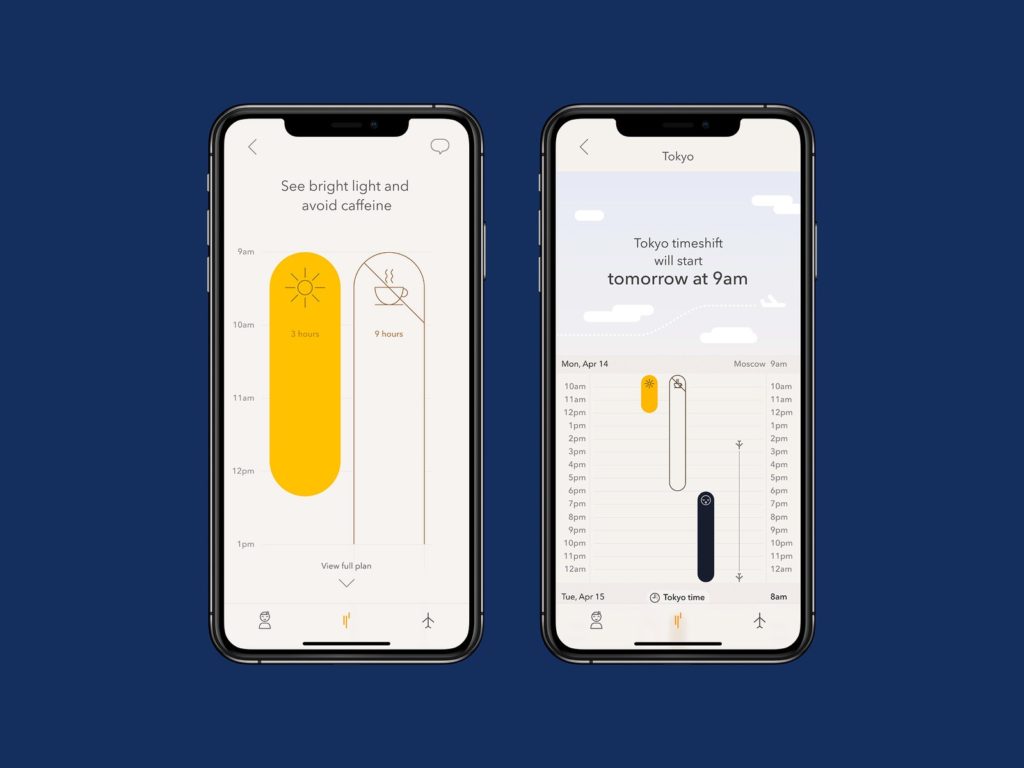Tired of Jetlag? The App Timeshifter Will Help Reset Your Clock
Timeshifter cribs NASA-backed science to help you recalibrate your biorhythms after switching time zones….

Here on Earth, our sleep is synchronized with the sun. Our bodies stir at daybreak and slump at nightfall, the light acting like a metronome for our delicate body clocks. This biochemical ebb and flow is known as our circadian rhythm, and it repeats every 24 hours.
Go into space, though, and you get a sunrise or a sunset approximately every 45 minutes. Astronauts on the International Space Station loop around our planet so fast, it creates a cycle of light and dark that’s disruptive enough to an astronaut’s biorhythms to send them teetering into insomnia or exhaustion.
Researchers at Harvard Medical School and Brigham and Women’s Hospital began studying this problem a few years ago, and latched onto this relationship between light and circadian rhythms. They found that when astronauts systematically sought out bright light and then avoided it during specific intervals, they could effectively “reset” their circadian clocks. One researcher likened the method to “visual caffeine.” Earlier work had found a similar system effective for night-shift workers. At NASA, the insight led to the development of new lighting systems on spacecrafts, which use dynamic lighting to better maintain healthy sleep schedules.
It turns out the same method of using light to fool your biological clock works pretty well when you’re zipping across time zones here on Earth. That is, at least, the philosophy that underpins the app Timeshifter, designed to cure jet lag with a few simple tricks of light.
Mickey Beyer-Clausen, Timeshifter’s CEO, says his invention deals with the underlying cause of jet lag—“shifting the clock in our brains”—rather than just the symptoms. He pooh-poohs folk wisdom, like fasting before a flight or popping Ambien on the plane. “None of this stuff will help you at all,” he says. “If you are sleeping on the plane when you’re supposed to see light, you will make jet lag worse.”
Beyer-Clausen grew up logging air miles with his mother, a flight attendant for Scandinavian Airlines, who took him with her on trips around the world. “I’d be in Bangkok for three months, then in Rio, then in Chicago,” he says. “I just went with her and did my homework at all these locations around the world.”
Every frequent flyer has a trick to outrace jet lag, but Beyer-Clausen’s come-to-Jesus moment came when he met Steven Lockley, a neuroscientist at Harvard Medical School, and an expert in circadian rhythm studies. Lockley has worked with astronauts and Formula 1 race car drivers to improve sleep quality through light exposure.
Together, he and Beyer-Clausen designed the Timeshifter app. It joins several others in the App Store that promise to beat jet lag: Entrain, a free app, similarly leverages light exposure to reset circadian rhythms. Uplift, for $10, offers a few physical exercises based on “biorhythmic acupressure.”
Timeshifter’s approach hinges on personalization, emphasizing that every individual responds to light slightly differently. “Unfortunately, no generic solution can help you tackle the underlying cause of jet lag, and might even be counterproductive,” Lockley writes on the app’s website. Instead, Timeshifter takes into account the particulars of each trip and the person taking it.
The app uses three pieces of information: your sleep pattern, your chronotype (morning person or night owl), and your itinerary. It uses these metrics to generate a “personalized” jet lag plan, noting when to seek light and when to avoid it, plus optional recommendations around the use of melatonin and caffeine. Beyer-Clausen claims that if you follow the app’s instructions to a tee, “you can shift the clock three to four times as fast as normal.”
Photograph: Timeshifter





